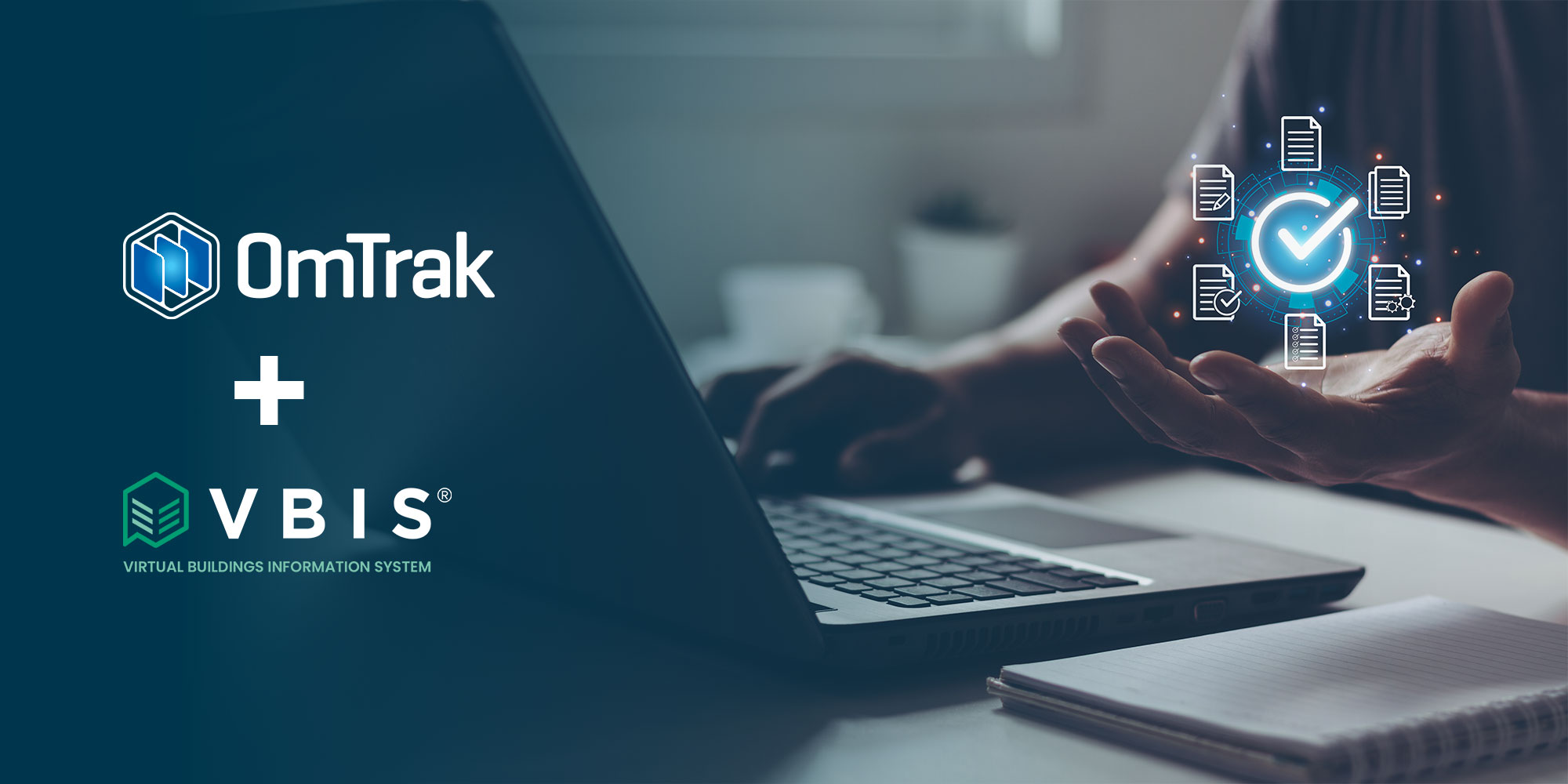In any construction project, asset management plays a crucial role in ensuring that everything runs smoothly even after project completion. With the increasing complexity of built assets and the need for various stakeholders to access and manage asset data easily, industry players are continually seeking innovative solutions. That is why, as a leader in construction management software, we at OmTrak are proud to partner with VBIS. In this post, we will delve into the benefits of this partnership and how it is transforming asset management and facilities management activities for our users.
Who is VBIS
VBIS (Virtual Buildings Information System) is a ground-breaking solution that promises to revolutionise the way asset data is processed and managed. Developed with the support of the Victorian Government, VBIS provides a comprehensive classification structure and tags that can be used to link disparate data systems. This technology is crucial for the construction industry where asset data is generated from multiple sources. With VBIS, facility and asset managers can seamlessly access information about the assets, ensuring that they operate efficiently and effectively. Additionally, VBIS emphasises the connection of data in existing built environments, meaning that asset histories can be traced, and future developments can be better planned. The classification structure, along with the search syntax, allows for the seamless handover of information from new construction projects, resulting in a seamless whole-of-life view of the assets.
The Omtrak difference
Using the VBIS asset classification system can be made simple by incorporating the data tables direct into OmTrak. Using OmTrak’s Manuals module allows project users to capture in real time accurate asset data matched to the appropriate client based VBIS asset tables. This avoids the costs of data duplication and re-work to ensure a perfect fit for an owners ongoing asset and facility management services. OmTrak also has the flexibility to match a specific client/owners level of take up of the VBIS codes. This means you can tailor the asset data outputs to suit the actual needs of the organisation. And because OmTrak is so well designed it is not a major task or cost to get set-up. Most projects can be up and running within 7 days, even less if you are one of our client partners.
Let’s take a closer look at some of the benefits of the partnership with OmTrak and VBIS.
Classification and Interconnectivity: One of the primary benefits of this partnership is the ability to classify and connect asset data that is typically stored in disparate systems. With VBIS tags, we can provide an ontology for assets in the built environment, including a four-level structure that provides a unique alphabetic tag per type of asset. This feature means that our users can adopt a consistent asset classification structure and greater interconnectivity, making it easy to access information across systems. This benefit eliminates the challenge of having asset data distributed across multiple systems, which can lead to inefficiencies due to duplication and potential errors.
Standardisation of Asset Registers: Another significant gain for our users is the ability to standardise asset registers using industry best practice data structure and categorisation. The VBIS tags can be applied to existing databases to provide a standard structure without disrupting any existing categorisation. This structure means that asset information is consistent across all projects, departments, and stakeholders. The consistency in asset registers and asset information not only empowers our users to manage assets better but also facilitates the decision-making process. Additionally, it assists with facilities management activities such as maintenance, repair, and replacement planning.
Easy Access to Asset Information: With the VBIS tags, users can have easy access to existing information irrespective of stored location or application, allowing quick use and reuse. This feature means that our users can enjoy seamless asset management and facilities management, save time, and improve productivity. It also eliminates the need to comb through multiple documents and apps to find essential information, translating into better decision making and real-time monitoring of asset performance.
Alignment with Standards and Guidelines: Our partnership with VBIS aligns with various standards and guidelines, including the Victorian Digital Asset Strategy, Queensland Government Data and Information Guideline, ISO12006 and ISO55000. By aligning with these standards and guidelines, it shows our commitment to provide our users with reliable and best practice asset management and facilities management solutions. This alignment means that our users can have confidence in our system’s effectiveness and benefit from increased efficiency, productivity, and cost-effectiveness.
Facility Lifecycle Management: Finally, the collaboration between OmTrak and VBIS enhances facility lifecycle management. Our users can now enjoy a whole-of-life view of assets across all areas of performance, including design, construction, handover, maintenance, and decommissioning. This view empowers stakeholders to monitor asset performance, compliance to standards and regulations, and ensure that assets are appropriately maintained and managed throughout their life cycle.
In conclusion, the partnership between OmTrak and VBIS provides an innovative and comprehensive asset management and facilities management solution for our users. The benefits of this partnership include classification and interconnectivity of asset data, standardisation of asset registers, easy access to asset information, alignment with industry standards and guidelines, and enhanced facility lifecycle management. As a leading construction management software provider, we are excited to be transforming the industry with this partnership and enabling our users to manage their assets better.
